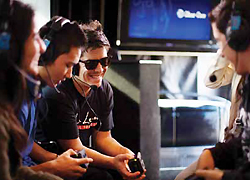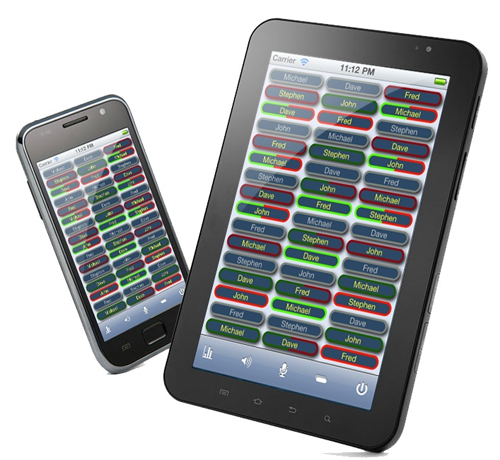
Intracom Systems VCOM, Clear-Com Concert, and RTS VLink are all virtual intercom systems that can be used stand-alone or interfaced with dedicated intercom devices using 2- and 4-wire interfaces.
In addition, Riedel, RTS, and Clear-Com can extend their dedicated digital matrices to virtual panels on a computer that mimic the operation of the physical key panels.
With these IP-based systems, virtually all of the standard communications features available on party-line and digital matrix intercoms can be accessed, such as full-duplex talk and listen, listen-only, party-line and point-to-point communication, the ability to monitor multiple channels simultaneously, interruptible program feed, and more. Audio quality is optimized for voice, and latencies are minimal due to the specialized audio codecs used, with audio encryption for security.
These systems are scalable to hundreds of users, connecting production staff regardless of their location. The Intracom VCOM can even brings intercom functionality to an iPhone, iPad, or Android device. The wireless communications link can be via Wi-Fi or a carrier’s 3G or 4G network. Multiple point-to-point and party-line channels can be set up and accessed at a touch of the screen, and the virtual buttons can be set for push-to-latch or momentary operation, as needed for the particular channel.
One user with multiple church locations reports: “We have one production director at each of our campuses on a VCOM iPod, along with three roaming technicians and a central production director. Everyone is able to stay in a party line and then break away to one of the other party lines if an issue arises that does not require everyone’s attention.”
What’s Next?
Digital party-line systems and virtual intercoms have expanded the possibilities for production communications, as well as improved the audio quality. And they allow for the use of existing infrastructure, be it the mic cables from an analog party-line, the LAN network, or the WiFi router. These systems can operate as stand-alone comms, or add flexibility and reach to an already installed intercom.
As users provide further valuable input, and the manufacturers embrace coming technologies, it’s likely that there will be even more of a convergence among audio networking, the smart phone or tablet computer, and production communications.
Gary Parks has worked in pro audio for more than 25 years, including serving as marketing manager and wireless product manager for Clear-Com, handling RF planning software sales with EDX Wireless, and managing loudspeaker and wireless product management at Electro-Voice.

